By the end of the 3rd quarter, according to information reported to ANACOM, the number of base stations installed in the national territory with 5G technology amounted to 4317 stations, spread across 271 municipalities (88% of municipalities in the country) and 1191 civil parishes (39% of civil parishes in the country).
Compared to data reported at the end of the 2nd quarter of 2022, the following evolution was registered:
- The number of 5G base stations1 installed increased by 48%,
- The number of municipalities whit 5G stations grew by 37%,
- The number of civil parishes with 5G stations grew by 37%, of which:
- Low density civil parishes with 5G stations (up 86%),
- Civil parishes in the Autonomous Regions with 5G stations (up 264%).
NOS maintains its position as the operator that, by the end of the 3rd quarter of 2022, has installed more base stations, followed by Vodafone and MEO; however, as regards the change in the number of stations installed compared to the previous quarter, this was small in the case of NOS (only 2%) while in the case of Vodafone and MEO, it was 200% and 65%, respectively.
By the end of the 3rd quarter, according to information reported to ANACOM, the number of base stations installed in the national territory with 5G technology reached 4317 stations, spread across 271 municipalities (88% of municipalities in the country) and 1191 civil parishes (39% of civil parishes in the country).
Figure 1 - Municipalities with 5G stations
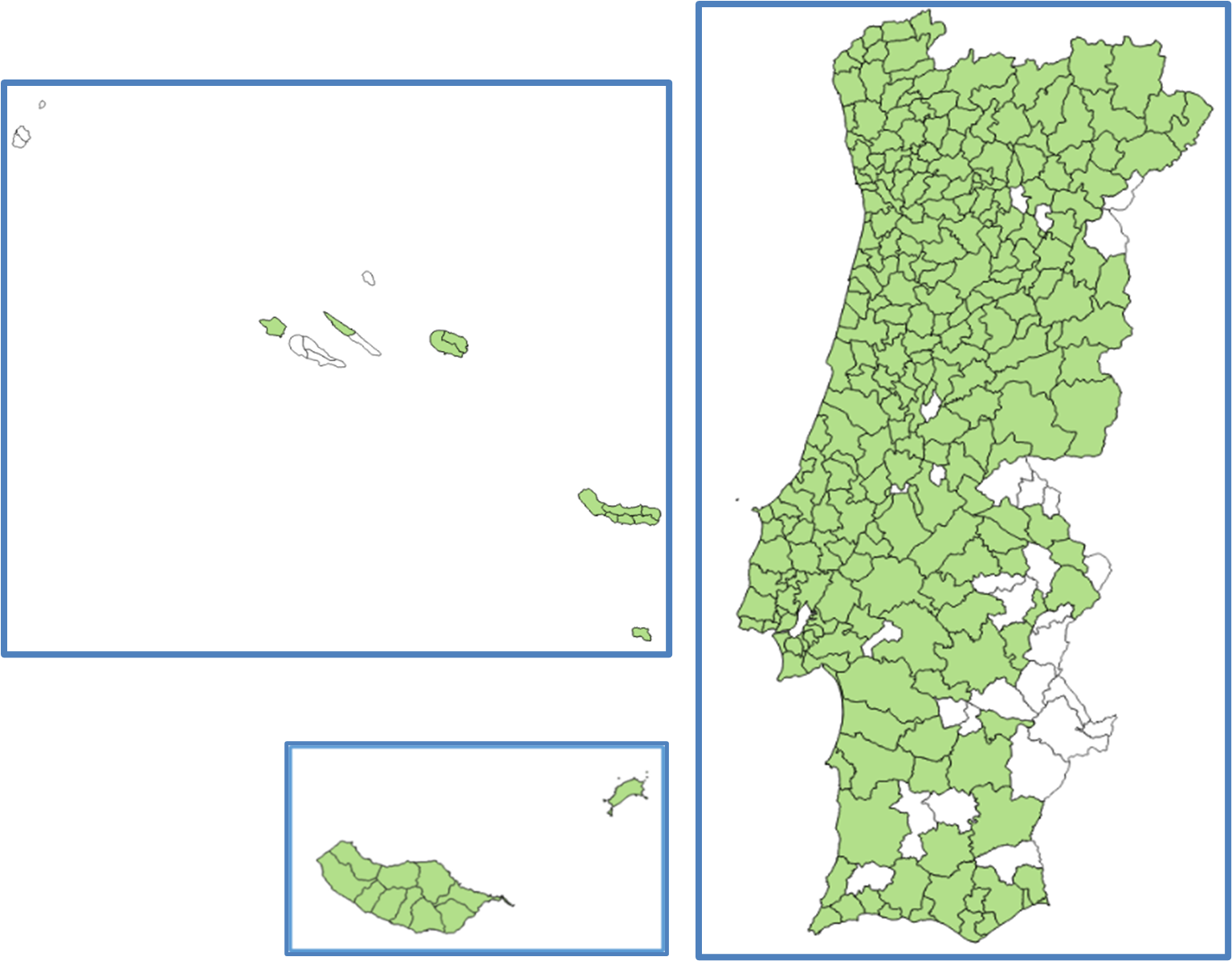
It should be noted that all municipalities in the Autonomous Region of Madeira were already served by 5G base stations by the end of the 3rd quarter. Of the 308 municipalities that make up the national territory, there are, however, 37 municipalities that are not yet served with any station associated to the 5G technology. The list of these municipalities is as follows:
Table 1: Municipalities not served with 5G stations
|
Alandroal |
Freixo de Espada à Cinta |
Portel |
|
Alcoutim |
Marvão |
Reguengos de Monsaraz |
|
Alvito |
Monchique |
Sardoal |
|
Barrancos |
Monforte |
Serpa |
|
Campo Maior |
Moura |
Sousel |
|
Castelo de Vide |
Mourão |
Tabuaço |
|
Castro Verde |
Nisa |
Vendas Novas |
|
Cuba |
Ourique |
Vila Nova da Barquinha |
|
Estremoz |
Pedrógão Grande |
Vila Viçosa |
|
Figueira de Castelo Rodrigo |
Penedono |
|
|
Calheta de São Jorge |
Lajes do Pico |
Santa Cruz das Flores |
|
Corvo |
Madalena |
São Roque do Pico |
|
Lajes das Flores |
Santa Cruz da Graciosa |
NOS is the operator that by the end of September had installed the largest number of 5G stations, with a total of 1974 stations (46%), followed by Vodafone with 1604 stations (37%) and MEO with 739 stations (17%).
Figure 2: Geographical distribution of 5G stations
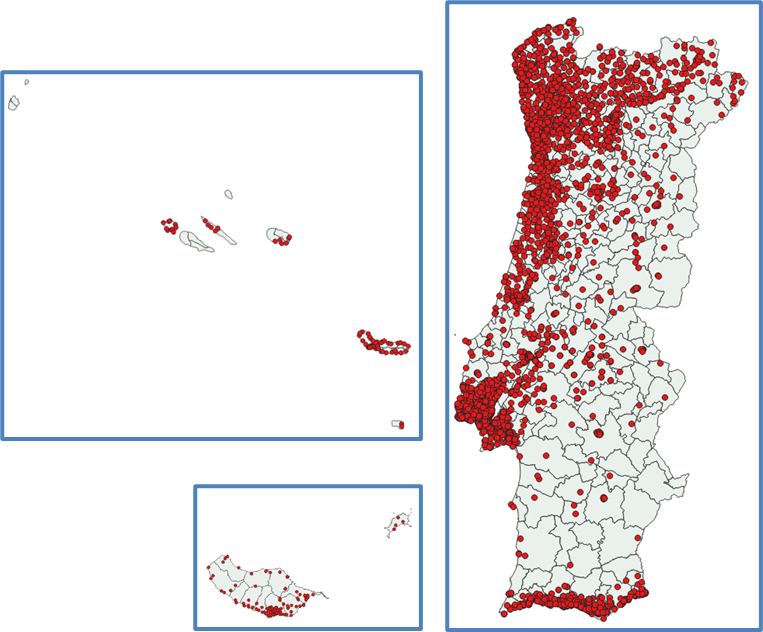
In terms of the territorial spread of 5G base stations across municipalities, MEO is the operator that has 5G base stations in the largest number of municipalities - 218, followed by NOS, in 184 municipalities, and Vodafone in 179 municipalities.
Figure 3: Number of municipalities where each operator is present
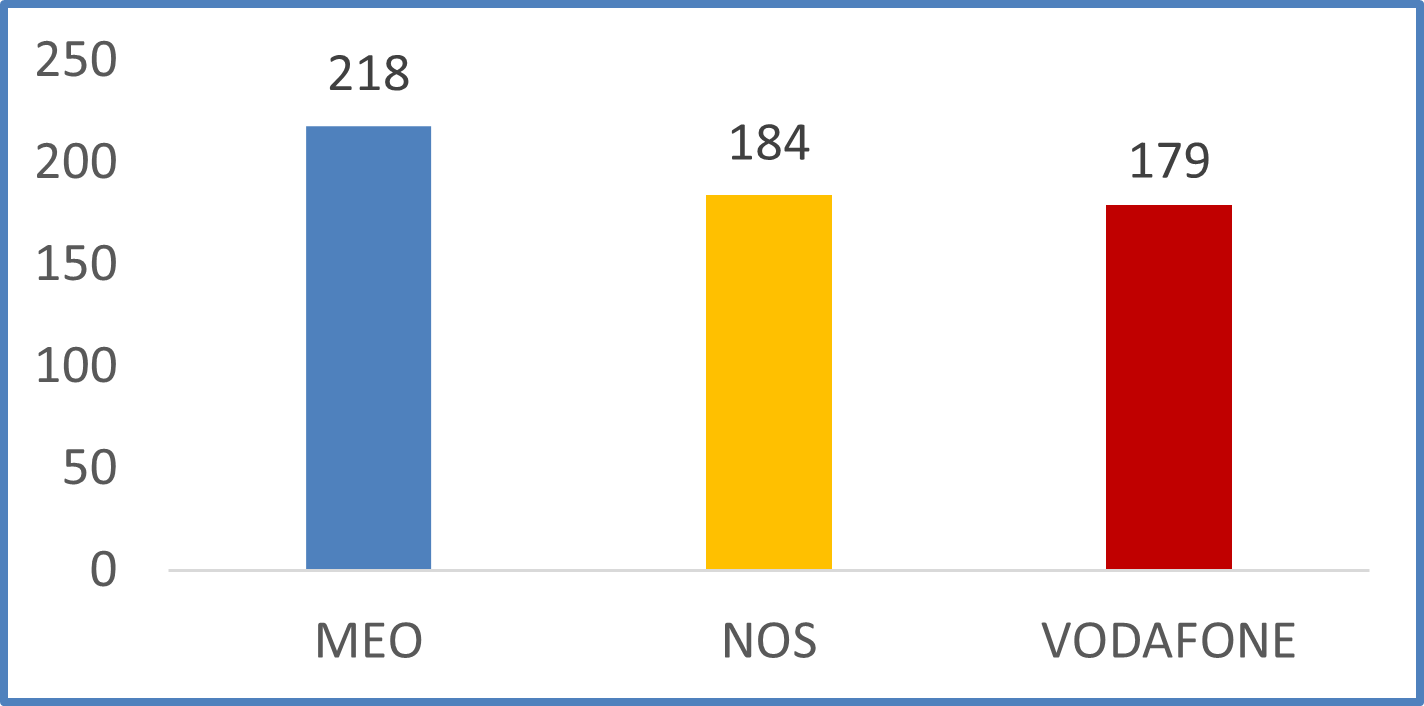
Despite this evolution, if we look at the total number of existing stations (2G, 3G, 4G and 5G) we see that NOS is the operator with the fewest stations, a total of 11 395 stations (28% of the total), with Vodafone in first place with 16 360 stations (39%) and MEO in second place with 13 711 stations (33%).
Figure 4 - Number of 2G, 3G, 4G and 5G stations per operator
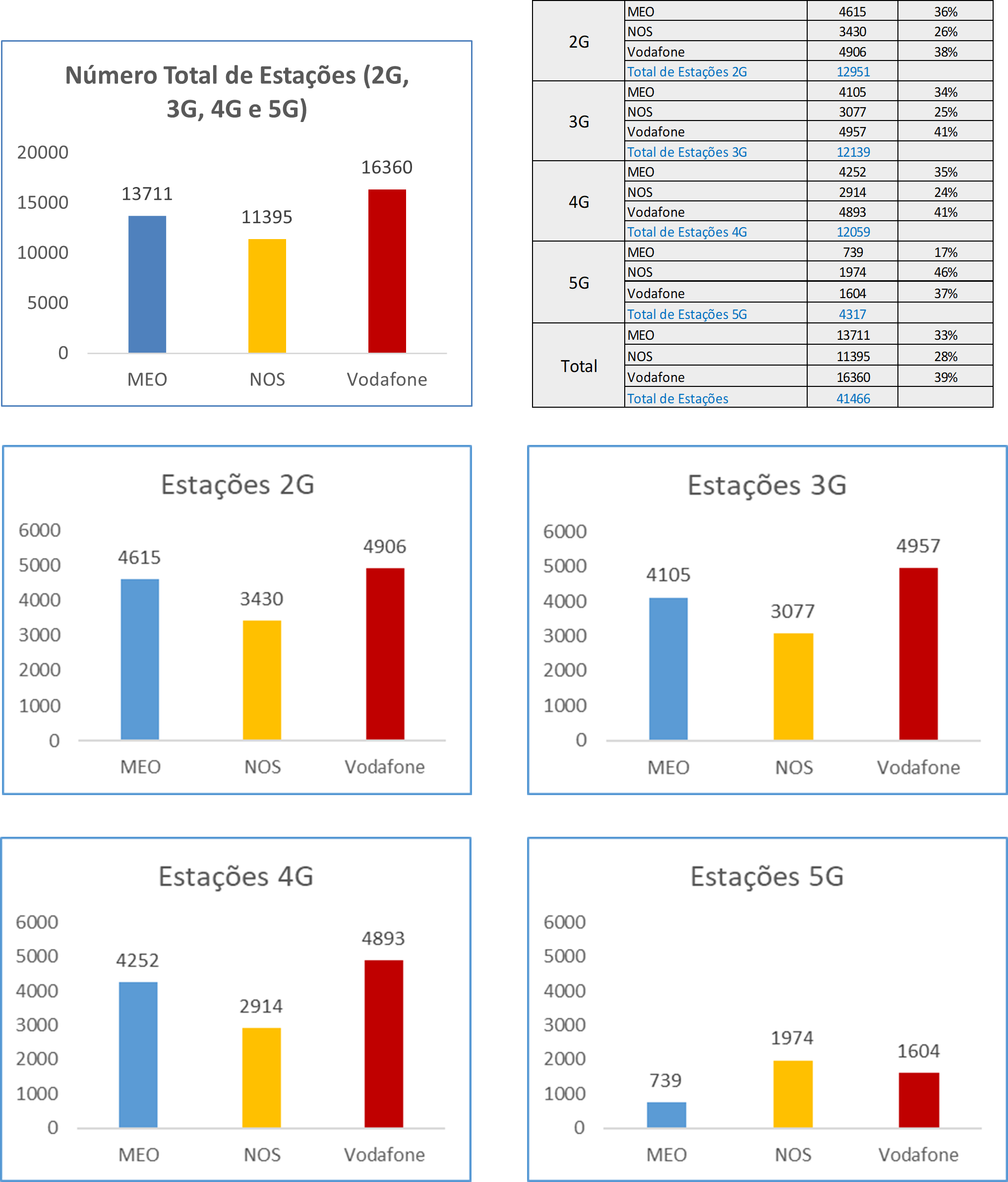
Many of the 2G, 3G, 4G and 5G stations of each operator are located in the same place, so it is important to analyse the total number of sites where each operator has stations. Thus, it is observed that Vodafone has stations in 5763 sites, MEO in 4742 sites and NOS in 3578 sites.
Figure 5 - Number of sites with stations per operator

A significant majority of 5G stations (73% of the total, corresponding to 3137 stations) are located in Predominantly Urban Areas. Around 14% (631 stations) are installed in Medium-Urban Areas and 13% (549 stations) in Predominantly Rural Areas.
Figure 6 - Number of 5G stations per type of area, urban or rural
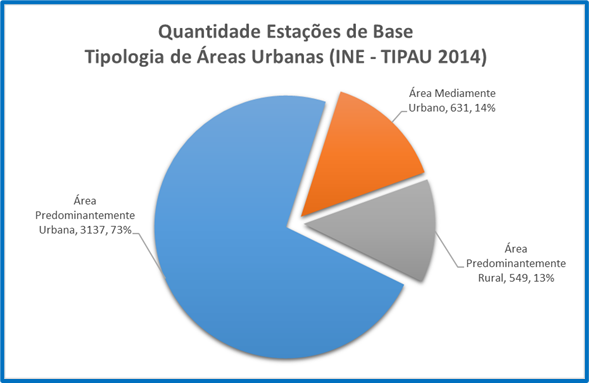
An analysis of the distribution of 5G stations across the country’s civil parishes, taking into account their population density, shows that 20% of the total (858 stations) are installed in low-density civil parishes.
Figure 7 - Distribution of 5G stations per type of civil parish

Although the vast majority of 5G stations are installed in civil parishes other than low density ones, only around 59% of such parishes have 5G stations.
In the case of low-density civil parishes, the proportion of those with 5G stations is much lower (26% of the total, i.e. 466 civil parishes). In fact, 1347 of these parishes (74% of the total) are still not provided with 5G stations.
In the case of civil parishes of the Autonomous Regions of the Azores and Madeira, the proportion of those without 5G stations is also significant (57% of the total, i.e. 119 parishes). There are 91 parishes (43%) with 5G stations.
Finally, it should also be stressed that, by the end of September, there were 1.56 million 5G mobile Internet accesses in Portugal, which represents 16.4% of total mobile Internet accesses. The monthly traffic generated reached 4953 TB, which means that 7.6% of total mobile traffic is already supported on 5G networks.
1 5G base station means a radio station with at least one transmission equipment using 5G mobile technology and located in a given geographical location.




